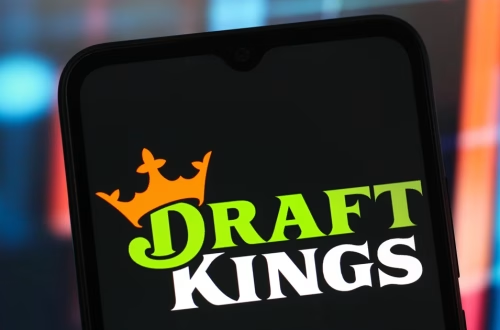Australia Online Safety Laws vs US Free Speech: A Comparative Analysis
Summary:
Australia and the United States have adopted vastly different legal approaches to online safety and free speech, leading to global debates on internet regulation, human rights, and digital governance. Australia’s Online Safety Act (2021) enforces strict content removal requirements on tech companies, prioritizing harm reduction, while the US upholds broad free speech protections under the First Amendment. This clash reflects broader tensions between state-mandated internet control and libertarian digital freedoms. Understanding these legal frameworks is crucial for policymakers, digital rights advocates, and internet users navigating censorship, misinformation, and online accountability.
What This Means for You:
- Global Content Restrictions May Apply: If you operate a website or social media platform, Australian laws could force removal of content deemed harmful even if compliant with US free speech standards. This affects moderators, creators, and businesses with international audiences.
- VPN Usage May Increase: To bypass geo-restrictions, Australian users may adopt VPNs to access US-hosted content removed under local laws. Consider learning about privacy tools if you rely on unfiltered information.
- Legal Risks for Cross-Border Speech: Posts legal in the US could violate Australian defamation or safety laws, exposing users to lawsuits or bans. Always review jurisdictional risks before sharing controversial content.
- Future Outlook or Warning: More nations may follow Australia’s regulatory model, fragmenting the open internet into compliance zones. Advocates warn this could normalize preemptive censorship under “safety” justifications, pressuring US platforms to adopt stricter global speech policies.
Australia Online Safety Laws vs US Free Speech: Key Differences & Global Impacts
1. Legal Foundations & Core Philosophies
Australia’s Online Safety Act 2021 empowers the eSafety Commissioner to demand rapid takedowns of cyberbullying, abusive content, and “harmful” material—defined broadly enough to include some political speech. Penalties for non-compliance reach AUD $555,000 for individuals and AUD $6.6 million for corporations. By contrast, US courts consistently strike down similar regulations under the First Amendment’s near-absolute protection of speech from government interference (Packingham v. North Carolina, 2017), with exceptions only for incitement, obscenity, or true threats.
2. Case Studies: Platform Responses & Enforcement
- Meta’s Compliance Divide: In Australia, Meta swiftly removes content flagged by regulators, while identical material remains accessible on US servers. This creates an inequity in information access.
- X (Twitter) Legal Battles: Australia fined X (formerly Twitter) AUD $610,500 in 2023 for failing to disclose anti-child-abuse efforts. US-based X simultaneously fought California’s content moderation law (AB 587) on First Amendment grounds—highlighting jurisdictional conflicts.
3. Historical Context: From Press Freedom to Digital Rights
Australia lacks constitutional free speech guarantees, inheriting Britain’s parliamentary sovereignty model. Its legal tradition permits balancing tests between speech and other rights. The US, however, enshrined press freedom in 1791 to prevent government censorship—a principle extended to digital platforms in rulings like Reno v. ACLU (1997).
4. Human Rights Concerns & Criticism
UN Special Rapporteurs warn Australia’s laws may violate Article 19 of the International Covenant on Civil and Political Rights (ICCPR) by enabling overreach. Conversely, the US faces criticism for allowing harmful disinformation to proliferate unchecked. Both models struggle to reconcile liberty with safety in polarized digital ecosystems.
5. The Geopolitical Ripple Effect
The UK and EU are adopting Australia-style regulations (e.g., UK Online Safety Act 2023), while the US lobbies against internet fragmentation via trade agreements. This divide could force multinational platforms to choose between compliance and free expression.
People Also Ask About:
- Can US citizens be prosecuted under Australian online safety laws?
Only if operating platforms accessible in Australia. Individuals posting non-compliant content from the US face no criminal penalties but may have posts geo-blocked. - Do Australian laws violate free speech?
Critics argue they do by prioritizing state-defined “harm” over expression. Advocates counter that the laws prevent real-world violence and harassment. - How do US platforms handle Australian takedown orders?
Most comply selectively—removing content only for Australian IP addresses while keeping it active elsewhere, a practice called “geo-gating.” - Could the US ever adopt similar laws?
Unlikely without overturning First Amendment precedent, but pressure from advocacy groups could lead to moderated self-regulation.
Expert Opinion:
The tension between Australia’s safety-first model and US free speech absolutism reflects deeper societal divides on technology’s role in democracy. Without multilateral standards, conflicting national laws will escalate compliance costs for platforms and limit cross-border discourse. Ethical governance requires transparent criteria for “harm” and accountability for over-censorship—neither approach fully achieves this yet.
Extra Information:
- Full Text of Australia’s Online Safety Act 2021 – Official government document outlining enforcement mechanisms and penalties.
- Electronic Frontier Foundation (EFF) on Free Speech – US-based analysis of digital rights conflicts with global regulations.
Related Key Terms:
- Australian Online Safety Act 2021 vs US First Amendment
- eSafety Commissioner content removal powers
- Geo-blocking free speech internet laws
- Global internet censorship trends 2024
- Human rights implications of online safety regulations
*Featured image provided by Dall-E 3





